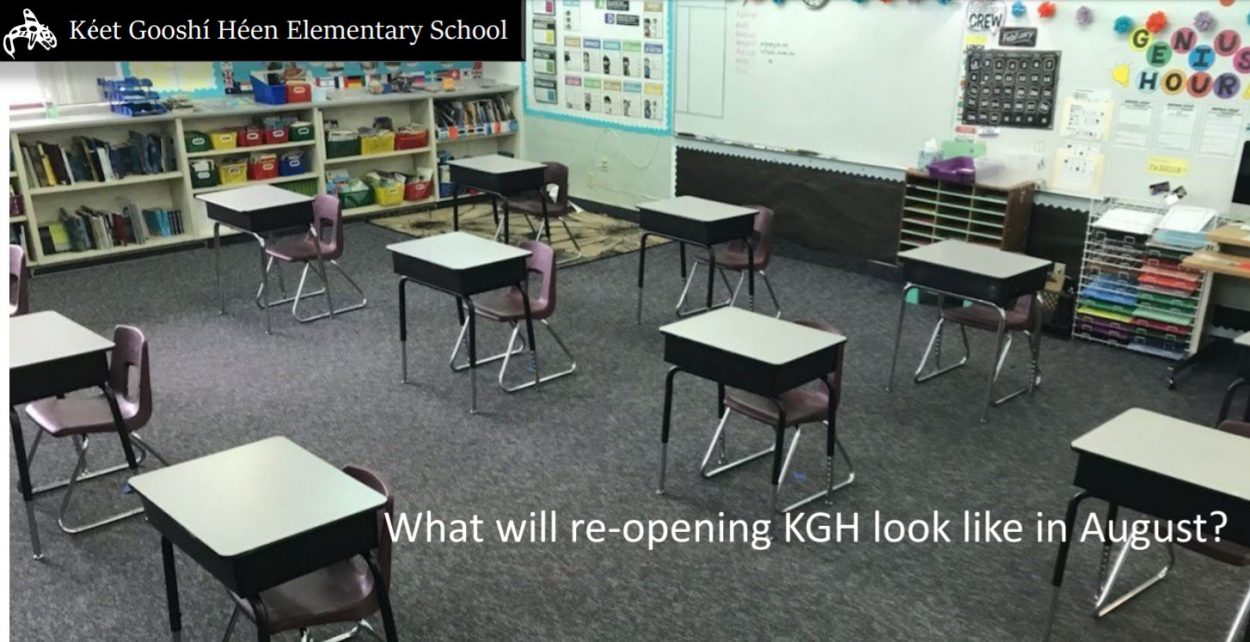
Sitka’s schools will be virtual for a few days following the holiday break, and return to in-person instruction in all buildings on January 11.
An overall reduction in Sitka’s infection rate is partially to thank for the move back into class — as is data that suggests that the coronavirus is not spreading in school buildings.
It will be exactly two months to the day from when they left, that Sitka’s students will return to their buildings on January 11. Interim superintendent John Holst says the restart day isn’t specifically tied to Sitka’s infection rate — which is down — but to district policies regarding holiday travel.
“Well, we had just a huge number of staff members who were traveling,” said Holst. “And we’ve wanted to stick with our travel guidelines which have kept our staff safe, and so we require seven days between the two tests after they arrive back.”
Even so, according to district metrics, which use the testing date of confirmed cases (rather than the reporting date), Sitka has dropped back into the green, or “low risk” alert level. The 14-day rolling case rate is at 5, and there are two active cases in the community. Back in early November, Sitka’s cases were surging past the 14-day rolling case threshold of 12 — and there were two district staff members who had tested positive. In consultation with SEARHC chief medical officer Dr. Elliot Bruhl and the rest of the Sitka Unified Command, Holst made the call to close all schools but Baranof Elementary on November 11.
Now, Holst believes the signs are favorable for getting back on course.
“It’s easy to close and hard to open,” said Holst. “That’s been the advice from (SEARHC chief medical officer) Dr. Bruhl. And as luck might have it, it’s going to be easy to open, because we’re back in the green.”
The district has updated its homepage with more detailed information about confirmed cases in each building, and the number of confirmed cases of transmission in the schools, which Holst says remains zero. He says mitigation measures in the buildings are working, and — compared to last July — there is a growing belief that schools are the best place for many kids to be during the pandemic.
“What would be the reason to shuffle kids out of a safe location to one that you don’t know if it’s safe or not?” he asked.
Along with in-person classes starting on January 11, the district will also resume extracurricular activities and sports — with an abundance of caution. At a listening session with the public in December, Holst shared survey results showing that 80-percent of parents wanted their children back in school. Holst says the district was already moving toward a return to extracurriculars — again, cautiously — and the return to “green” has made this decision easier.
“We need the students to have some sort of sense of normalcy in their lives,” Holst said, “I think that’s really important. The education stuff’s important, too, but the psychological value of kids going to school and knowing that they’re safe and that they’re with their friends and their teachers, and they’re learning stuff and having interactions — I think those are all really, really important things.”
Holst says that in-person school will resume on the same terms that it ended back in November, with shortened school days, modified lunch programs, physical separation of classes, synchronous and asynchronous options for students who choose to remain at home, and regular testing of staff.






























